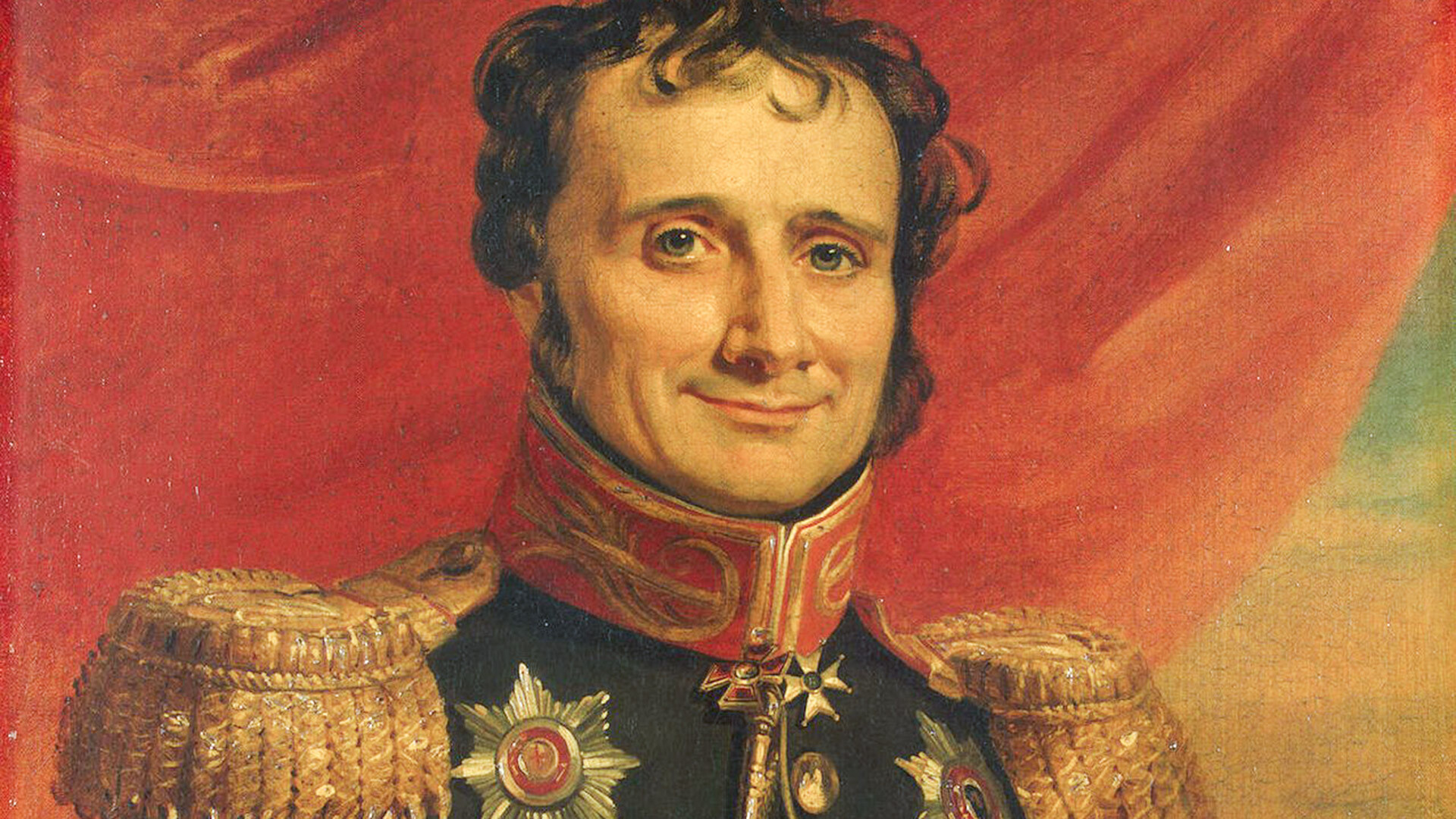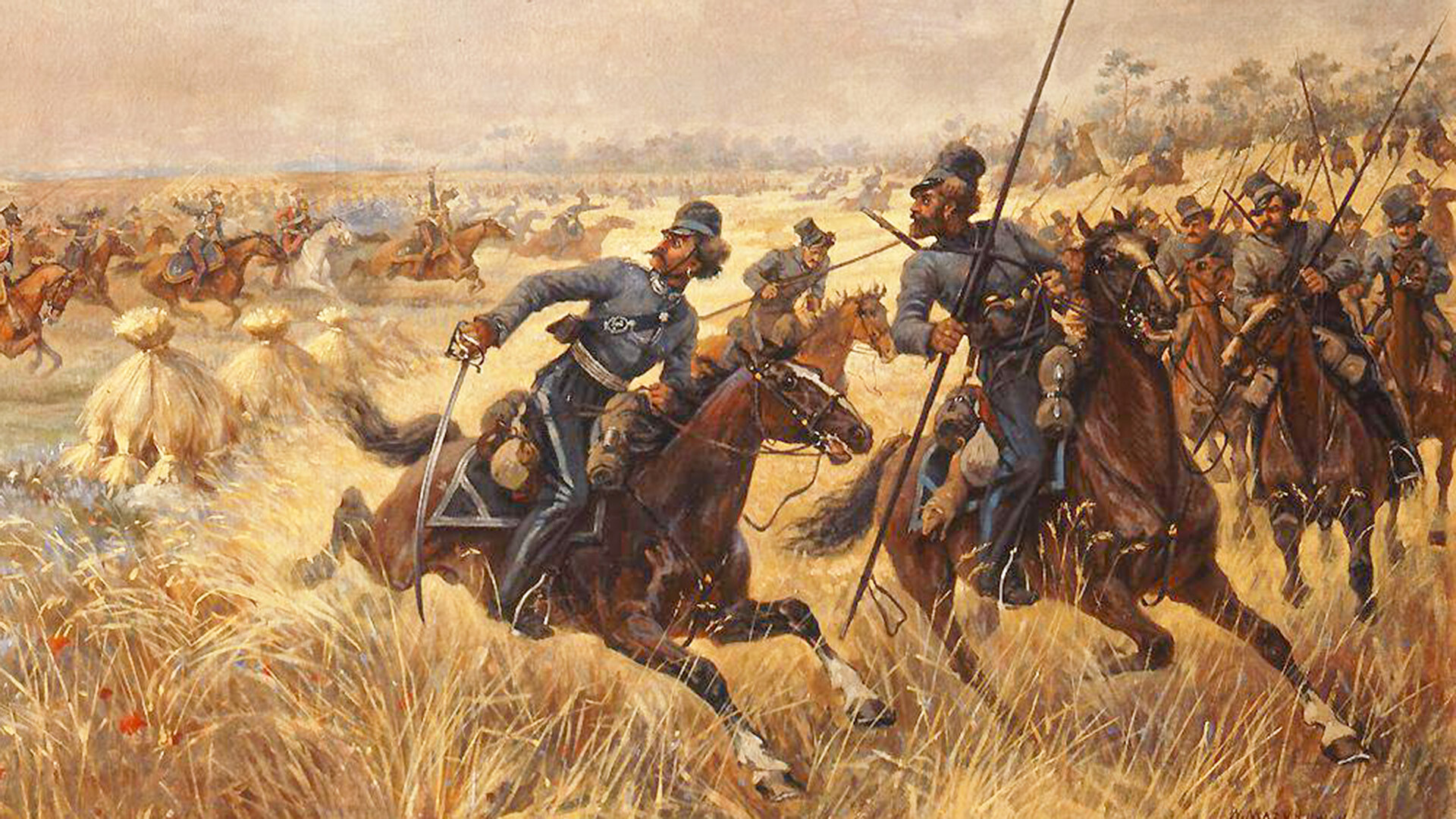
How Russia liberated Europe from Napoleon (PICS)
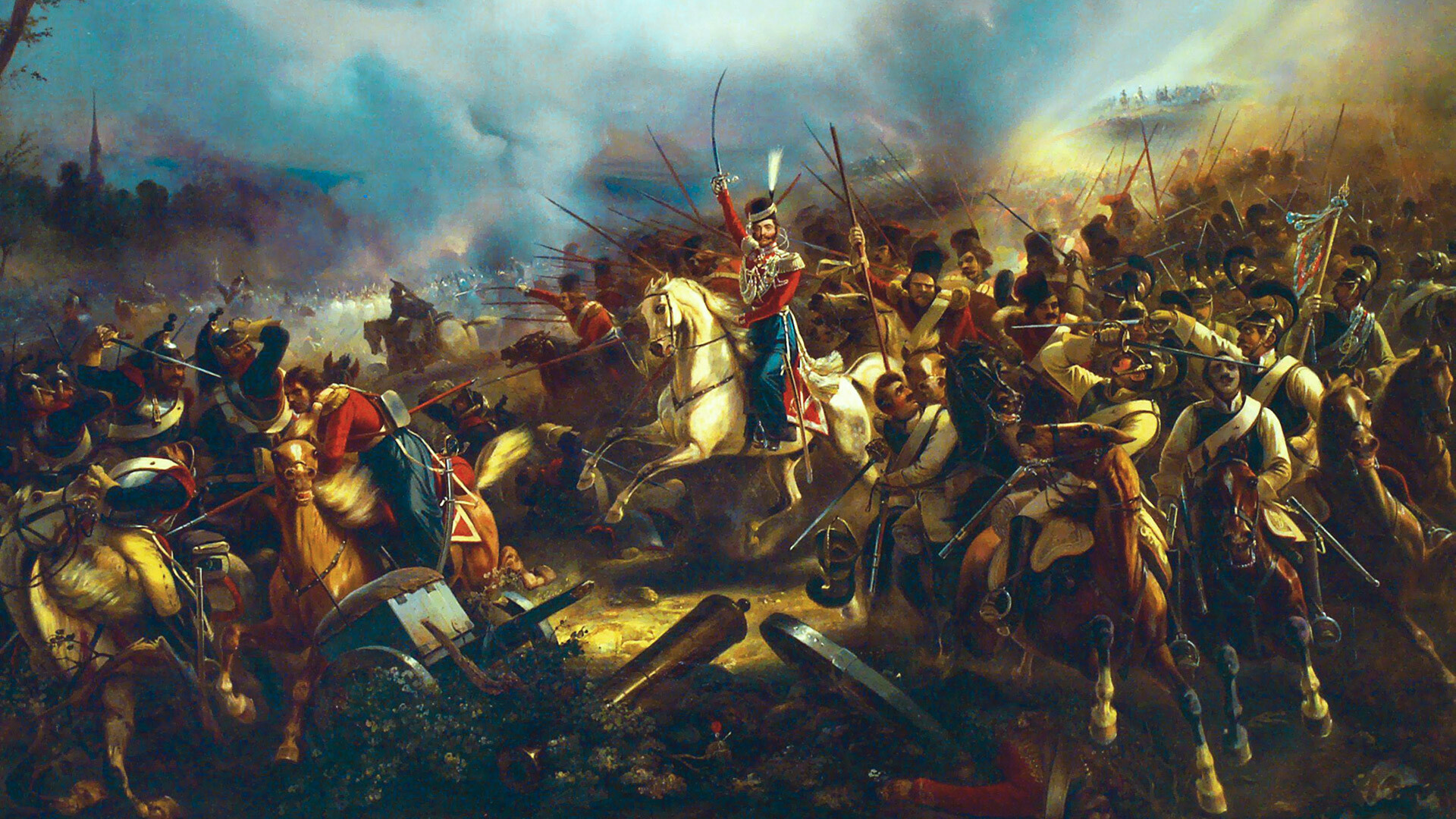
"We have left Russia behind and are now marching in foreign lands, but not in order to seize them, but to save them… Until now, we have fought for peace in our Fatherland and, now, we will fight for peace in all of Europe," was how officer Vasily Norov described the beginning of the Foreign Campaign of the Russian Army in January 1813.
By that time, only pitiful remnants remained of Napoleon's once "great" Grande Armée, which had invaded the Russian Empire in June 1812. Abandoning them to their fate, the emperor had left for Paris to gather new forces.
 Napoleon's Retreat from Russia.
Napoleon's Retreat from Russia.
The Russians were determined to take advantage of Bonaparte's plight and to put an end to his domination of Europe. "The Rhine, the Alps and the Pyrenees – these are the natural borders of France and nothing else should be part of the Napoleonic Empire or remain under its direct influence," declared Secretary of State to Alexander I and future Foreign Minister of the Russian Empire Karl Nesselrode.
First and foremost, Alexander I intended to win France's formal allies, Prussia and Austria, over to his side. Having been defeated by Napoleon in previous military campaigns, these states had been forced to act in line with his policies and even provide their troops for the Russian campaign.
 Russian army crossing the Niemen River in December 1812.
Russian army crossing the Niemen River in December 1812.
On February 28 the Russian Empire and Prussia signed a military alliance in Kalisz and, by March 4, their troops had jointly ousted the French garrison from Berlin. "How many heartfelt handshakes and embraces, how many tears of the sincerest joy, how many exclamations of 'Thank God, we are free again!'" wrote a German newspaper at the time.
The military campaign was going very successfully for the allied troops. They were making practically unopposed progress across German lands. In addition, back in January, the Russian army had fully occupied the Grand Duchy of Warsaw that had been set up by Napoleon in 1807 on territory seized from Prussia and Austria.
 Prussian Lützow Free Corps.
Prussian Lützow Free Corps.
The situation changed with the French emperor's return to the combat zone after he had succeeded, against the odds, in putting together a new army. In May 1813, he inflicted appreciable defeats on the allies at Lützen and Bautzen.
After this, the sides agreed a ceasefire of several months. Hostilities stopped for a time and, in Prague, peace talks even began with Austrian mediation.
 Russian Cossacks in Bautzen.
Russian Cossacks in Bautzen.
The allies required Napoleon to rid Italy and the Netherlands of the French military and political presence there; disband the Confederation of the Rhine, a grouping of German states dependent on France; accept the dissolution of the Duchy of Warsaw; and restore the Bourbon dynasty to the Spanish throne.
To the emperor, these demands were too sweeping. War flared again and now the Austrian Empire, too, began to fight alongside Russia and Prussia against the French.
 Congress of Prague.
Congress of Prague.
The Summer and Fall campaign of 1813 brought mixed fortunes to the warring sides. Napoleon smashed allied forces at Dresden, but the latter managed to inflict a defeat on a corps led by Gen Vandamme at Kulm and, at Dennewitz, they gave a severe mauling to Marshal Ney's troops as they headed for Berlin.
The decisive battle of the campaign and of the entire anti-French Sixth Coalition was the ‘Battle of the Nations’ at Leipzig on October 16-19. Around half a million men took part: on one side, the French with their Italian and German allies and, on the other, the Russians, Prussians, Austrians and also the Swedes, who had joined them with the intention of taking Norway from the Danes, who were friendly to Napoleon.
 Battle of Kulm.
Battle of Kulm.
"There was a fearsome cannonade! Cannon balls and grenades were hailing down. Some moments resembled Borodino," wrote Konstantin Batyushkov, adjutant to General Nikolay Raevsky. "I experienced terrible moments, particularly when the general sent me in different directions to carry orders either to the Prussians or to the Austrians and I rode alone over piles of bodies of the dead and dying… Never in my life have I seen anything more terrible than that battlefield and I won't see anything like it again for a long time to come."
At the very height of the battle the military contingents of the kingdoms of Saxony and Württemberg went over to the side of the anti-French coalition. This move was one of the main causes of the defeat of Napoleon, who lost up to 80,000 soldiers, in total. The allies' losses were estimated at 54,000.
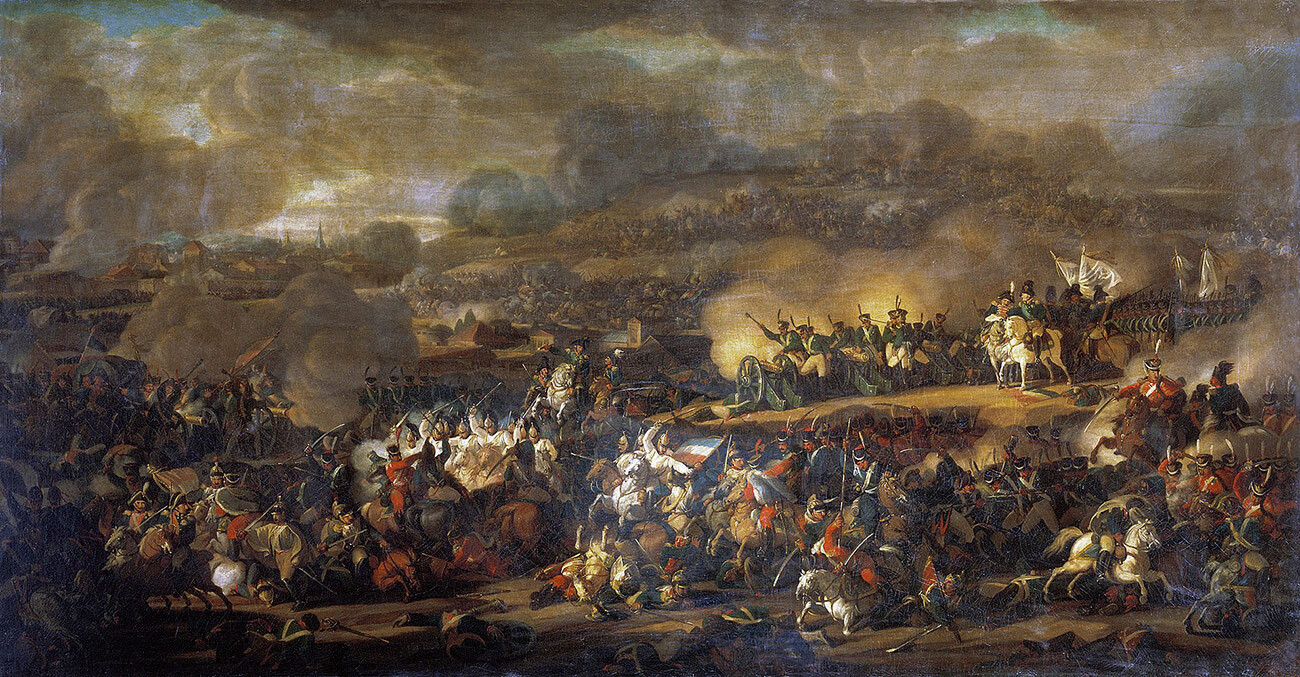 Battle of Leipzig at the Wachau Heights.
Battle of Leipzig at the Wachau Heights.
After Leipzig, Napoleon was forced to retreat inside the borders of France. Battered by the Coalition – which, alongside Saxony and Württemberg, was now also joined by Bavaria – the Confederation of the Rhine collapsed. In December, Russian troops liberated the Netherlands.
By January 1814, the fighting had moved inside French territory. In the Battle of Brienne on January 29, Bonaparte was almost run through with a lance, when Cossacks breached the French defenses – the emperor managed to ward them off with his saber.
 Cossacks raid on Napoleon during the battle of Brienne.
Cossacks raid on Napoleon during the battle of Brienne.
Napoleon did everything he could to ignite the "flame of a people's war". "Exterminate every last soldier of the Coalition army and I promise you a happy rule," said his secret decree to the inhabitants of the occupied regions.
But, it did not prove possible to rouse French citizens to battle. The allies tried to prevent violence against the local populations and went out of their way to stress that their fight was exclusively with Napoleon and not with the people.
 Episode of the Campaign of France.
Episode of the Campaign of France.
The emperor still managed to land bruising blows on his enemies – in February, coalition forces suffered defeats at Vauchamps and Montereau. But, the allies' superiority in manpower and weapons was already overwhelming by then.
Paris was stormed on March 30. A key role in the taking of the French capital was played by Russian troops, who lost more than 6,000 men in the battle. Tsar Alexander I triumphantly entered the city the following day.
 Russian troops enter Paris in 1814.
Russian troops enter Paris in 1814.
Napoleon, who was several hundred kilometers away with his small army, did not manage to come to the garrison's rescue. Realizing that the game was up, on April 6, 1814, he abdicated the throne.
The era of French domination of Europe was over. Russia, Austria and Prussia concluded the Holy Alliance and pledged to jointly maintain peace and the balance of forces on the continent and to forestall revolutions, the overthrow of ruling dynasties and the revision of state borders.
Although the new international order only survived for a few decades, it was a real godsend for Europeans exhausted by endless wars.
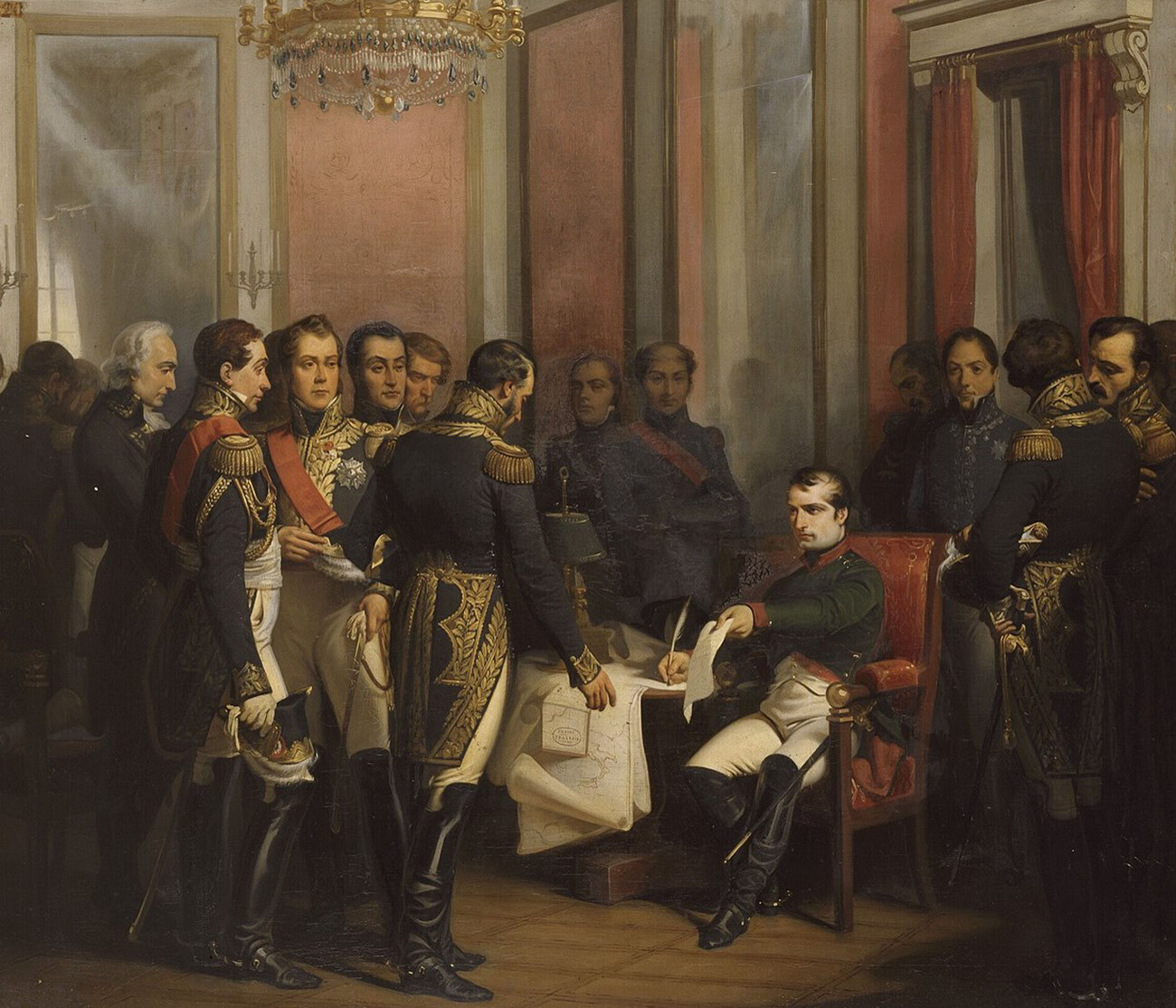 Abdication of Napoleon at Fontainebleau.
Abdication of Napoleon at Fontainebleau.



